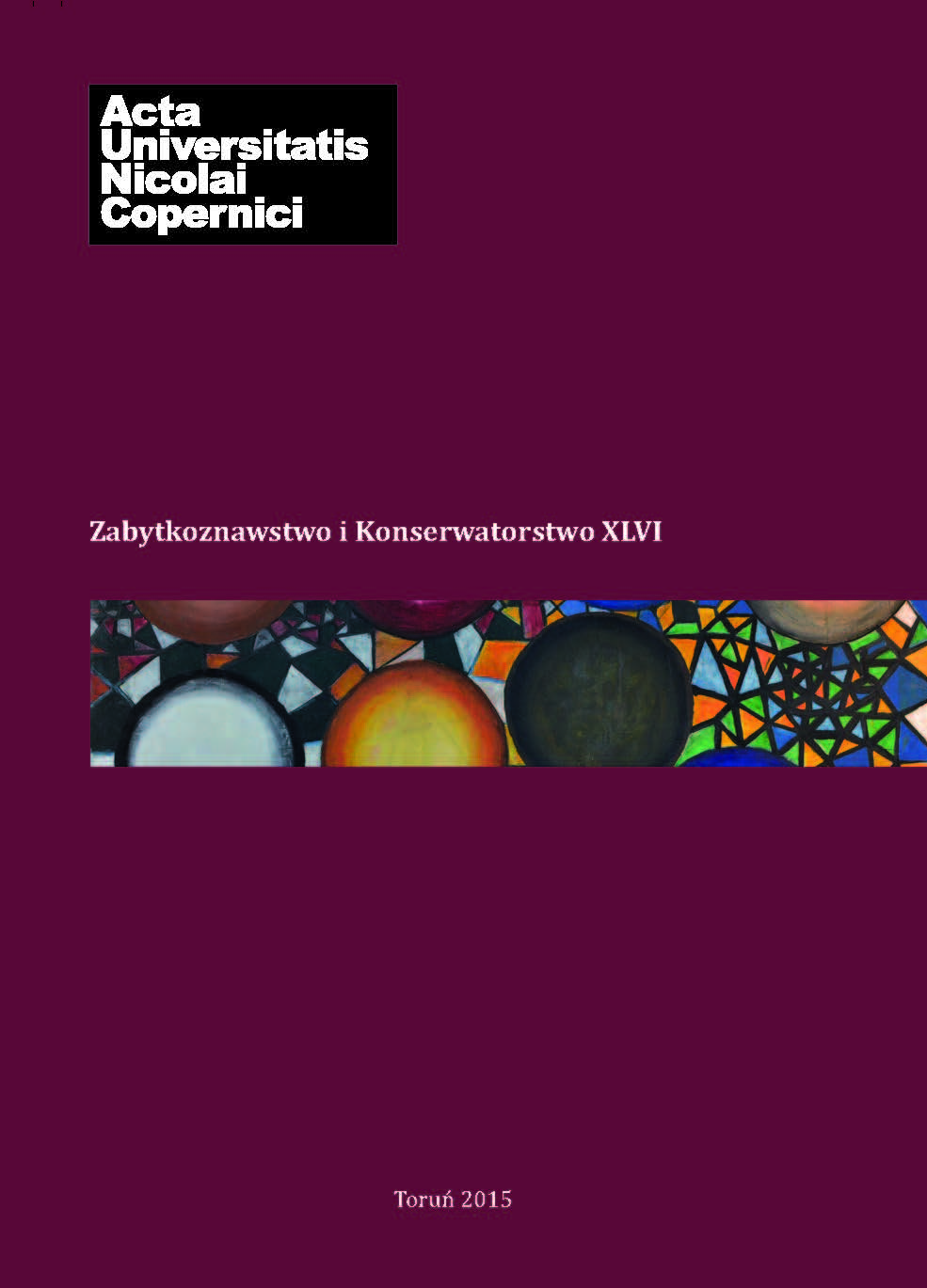Szylkret, bioorganiczny materiał w rzemiośle artystycznym – zagadnienia z zakresu materiałoznawstwa, technologii i stosowanych technik dekoracyjnych oraz niszczenie
DOI:
https://doi.org/10.12775/AUNC_ZiK.2015.018Abstrakt
Tortoiseshell was one of the earliest materials which has been used to the ornamental purposes. It is obtained from the outer layer of dermal bone of three species of sea turtles: tortoiseshell, green and loggerhead. Dermal bone is formed by scutes, strongly interconnected with each other, with characteristic layered structure. Chemically has a similar composition to the horn and mainly consists of keratin – hydrophilic, fibrous protein, insoluble in water with good resistance to physical and chemical agents. Dermal bone has a two-phase structure, in which keratin fibers are embedded in the amorphous matrix with a high content of sulfur. Tortoiseshell properties shall be described with accordance by the standards adopted for decorative stone. Carapace was used for making ornaments since antiquity in many cultures. In 1973 introduced global ban on trade of tortoiseshell on the basis of the Convention on International Trade in Endangered Species. Processing of dermal bone based on its forming at high temperature, of around 100°C and cooling to room temperature with a given form. Surfaces of objects made from tortoiseshell were carved, inlay decorated and piqué technique. It was also used in marquetry. The finished product is susceptible to mechanical damage, loses its shine, it darkens, delaminate, and may be biodegradable.
Pobrania
Opublikowane
Jak cytować
Numer
Dział
Licencja
CC BY-ND 4.0. Posiadaczem prawa autorskiego (Licencjodawcą) jest Autor, który na mocy umowy licencyjnej udziela nieodpłatnie prawa do eksploatacji dzieła na polach wskazanych w umowie.
- Licencjodawca udziela Licencjobiorcy licencji niewyłącznej na korzystanie z Utworu/przedmiotu prawa pokrewnego w następujących polach eksploatacji: a) utrwalanie Utworu/przedmiotu prawa pokrewnego; b) reprodukowanie (zwielokrotnienie) Utworu/przedmiotu prawa pokrewnego drukiem i techniką cyfrową (e-book, audiobook); c) wprowadzania do obrotu egzemplarzy zwielokrotnionego Utworu/przedmiotu prawa pokrewnego; d) wprowadzenie Utworu/przedmiotu prawa pokrewnego do pamięci komputera; e) rozpowszechnianie utworu w wersji elektronicznej w formule open access na licencji Creative Commons (CC BY-ND 4.0) poprzez platformę cyfrową Wydawnictwa Naukowego UMK oraz repozytorium UMK.
- Korzystanie przez Licencjobiorcę z utrwalonego Utworu ww. polach nie jest ograniczone czasowo ilościowo i terytorialnie.
- Licencjodawca udziela Licencjobiorcy licencji do Utworu/przedmiotu prawa pokrewnego nieodpłatnie na czas nieokreślony
PEŁEN TEKST UMOWY LICENCYJNEJ >>
Statystyki
Liczba wyświetleń i pobrań: 2330
Liczba cytowań: 0



